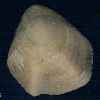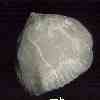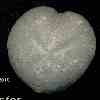
The Yorkshire Chalk
Fossils of the Chalk
by Mike Horne
(written for an exhibition in the Treasure House, Beverley, 2010)
Chalk is a pure white limestone that was deposited during the late Cretaceous. It forms the Wolds of East Yorkshire, where it is about 430m thick (where it has not been eroded away). It was deposited in a large shelf sea from about 100 million years ago until 75 million years ago.
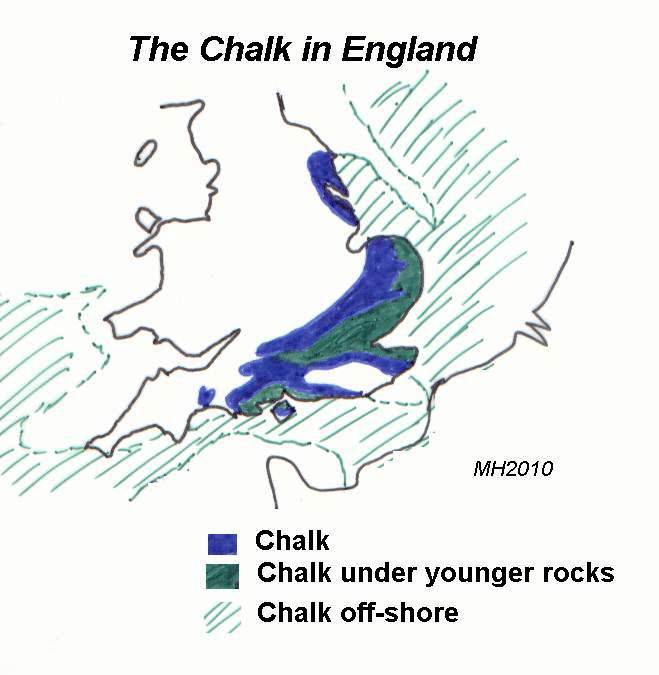
In the Chalk there are also bands of flint (a form of chert made of silica); some of these individual flint bands can be traced over huge distances. There are also bands of marl (grey limey clay) some of which are the remains of volcanic ash falls.
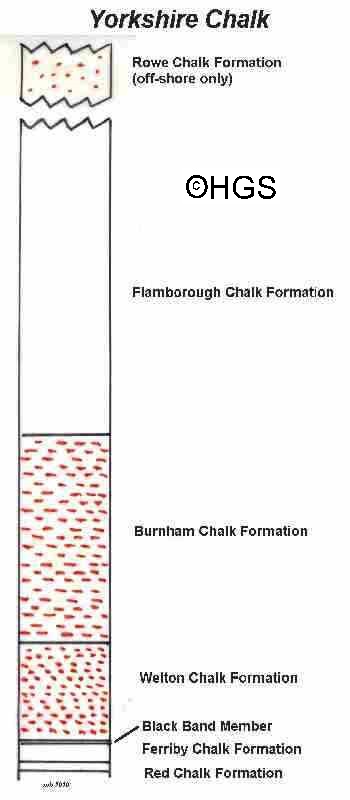
In Yorkshire the Chalk is classified into different Formations. From the lowest (and oldest) these are:- the Red Chalk which is red or pink in colour; the Ferriby Formation which is pale grey in colour and has no flints; above this is the Black Band and this marks a worldwide extinction event; the Welton Formation has grey flint nodules in it; the Burnham Formation has tabular sheets of grey flint in it as well as nodules; the Flamborough Formation has no flints in it. The Rowe Formation cannot be seen except as transported "rafts" from the North Sea found in the Boulder Clays of Holderness; it is soft and has black flints in it.
Chalk is mostly made of tiny plates of marine algae; the plates are made of the mineral calcite. It is also rich in microfossils, such as foraminifera, which are single celled animals that secrete beautiful shells. There are also abundant calcite needles of broken inoceramid bivalve shells.
Finding fossils in the Chalk is not easy - we are generally looking for white fossils in a white rock. With experience we can find a wide variety of fossils:-
Inoceramid bivalves - these are the most common invertebrate macrofossils. They were the clams and mussels of their day. Some can be as big as a metre across. (Click on the images for pictures of the specimens used in the exhibition.)
Pectinid bivalves - Scallops (e.g. Entolium from the Ferriby Chalk Formation)
Oysters are rare but can be found at some horizons. Oysters need to grow on a solid surface but the Chalk sea floor mostly consisted of soft white ooze.
Brachiopods - lamp shells. These are common at certain levels in the Chalk. There are smooth shelled Terebratulids and ribbed Rhynchonellids.
Sea urchins. The spines of the spiny cidarid sea urchins are quite common; but complete specimens are rare. Beautiful Micraster heart urchins can be found, as can the more robust Echinocorys. At some horizons a tiny sea urchin called Hagenowia can be found.
Starfish plates are quite common, but complete specimens are extremely rare.
Plates of crinoids are common, including the small Bourgeticrinus. These are sometimes called "sea lilies" but they are relatives to star fish and sea urchins and are not plants. Like their relatives the cidarids and starfish, complete specimens are rare. With all of these creatures their skeletons become disarticulated soon after death.
Snails, nautiloids and ammonites lived in the Chalk sea, but their shells are made of the mineral aragonite which dissolved after they died, so their fossilised remains are rare and poorly preserved. The guards of their relatives the belemnites are quite common. These were the cuttlefish of the Chalk sea.
Sponges. The pea-shaped and pea-sized calcareous sponge Porosphaera is quite common throughout the Chalk. Larger sponges are common at some horizons and are preserved in silica or as a rusty impression.
Rare solitary corals can be found.
Fish, sharks and rays. The teeth of rays and sharks can be found. The skeletons of bony fish are rarely preserved intact.
Pterosaurs would have flown above the sea - their fossilised remains are very rare.
The Chalk also has fossilised evidence of the presence of shrimps and worms. These burrowed extensively into the soft sediment, but because the sediment inside the burrow is the same colour we rarely spot the burrows!
A reconstruction of life in the Chalk Sea would look something like this:-
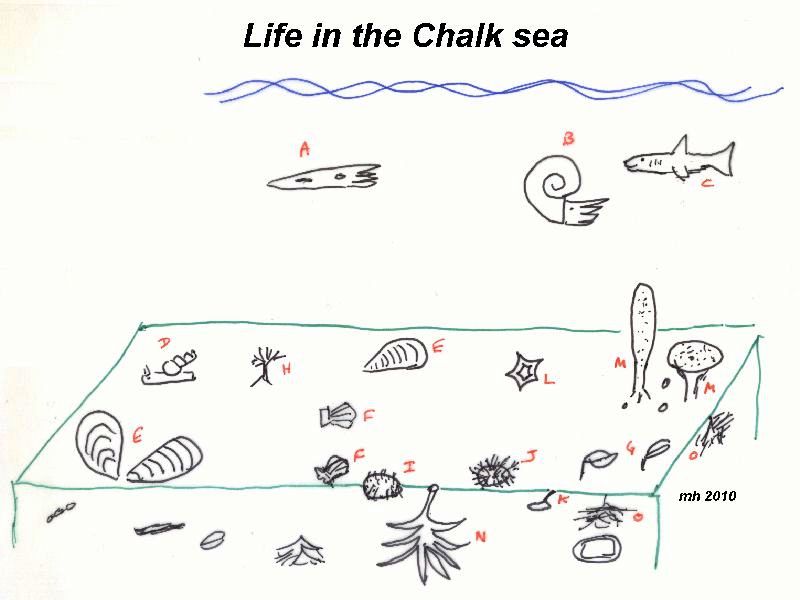
A - Belemnite animals
B - Ammonites
C - sharks and other fish
D - gastropods (snails)
E - inocermid bivalves (clams)
F - pectinid bivalves (scallops)
G - brachiopods (;amp shells)
H - crinoids (sea lilies)
I - Echinocorys sea urchins
J - cidarid sea urchins
K - Hagenowia sea urchins
L - starfish
M - sponges
N & O - burrows
Further reading -
Kent P (ed) 1980. British Regional Geology - Eastern England from the Tees to the Wash. HMSO 155pp.
Natural History Museum - British Mesozoic Fossils
Owen E and Smith AB (eds) 1987. Fossils of the Chalk. Palaeontological Asscoiation - field guide to fossils no. 2, 306pp.
Acknowledgments - Thanks are due to Terry Rockett for the loan of the Micraster specimens; Anne Horne, Derek Gobbett, Ian Scott and Paul Hildreth for editing the text.
Copyright Mike Horne 2010.
copyright 2017
Hull Geological Society
The text and images must not be used commercially without permission.
